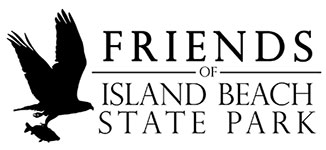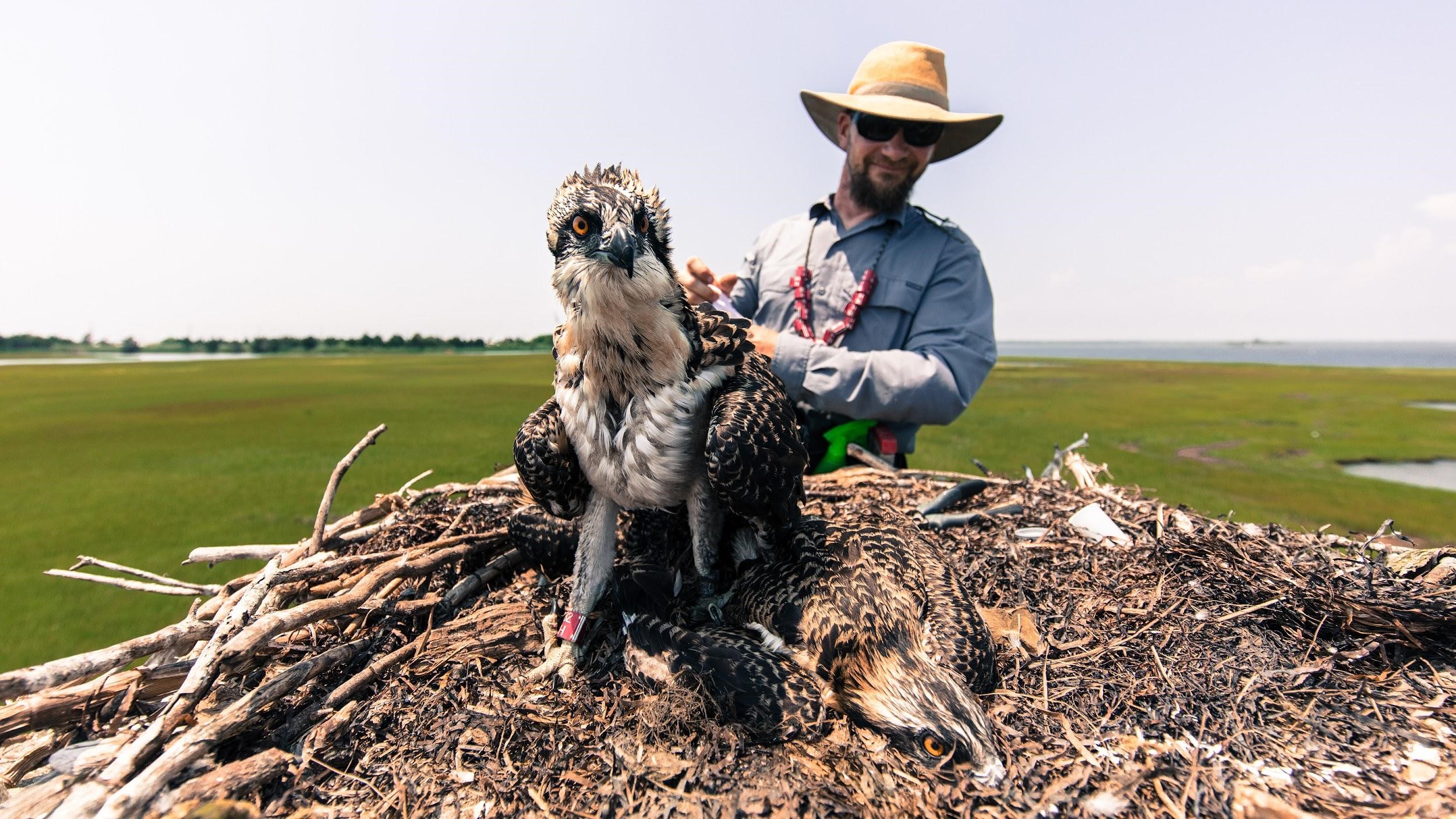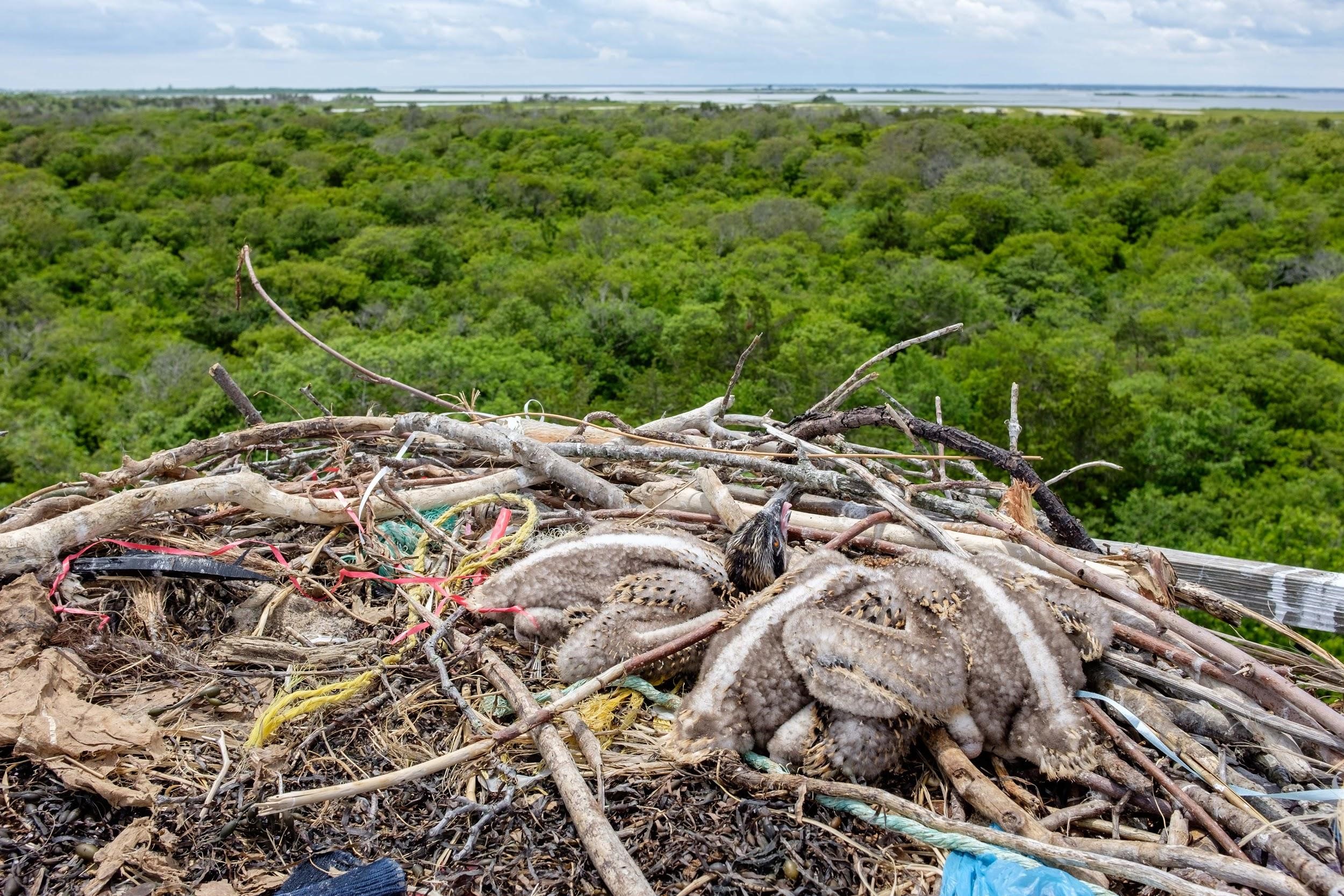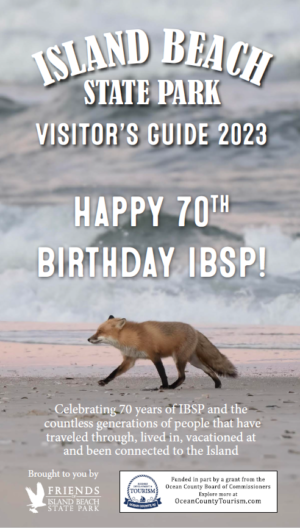by Ben Wurst, Habitat Program Manager, Conserve Wildlife Foundation of NJ
Over the past decade Conserve Wildlife Foundation of NJ has lead the New Jersey Osprey Monitoring Project. Our mission is to continue the groundbreaking recovery efforts conducted over 40 years ago to help the species to rebound from the effects of DDT and habitat loss along the New Jersey coast. From only 50 nesting pairs in the early 1970’s to over 650 today, species management is based on grassroots volunteerism, government/private partnerships, and community outreach to help maintain a stable population.
In the heat of summer, specially trained “Osprey Banders” conduct ground surveys of the most densely populated nesting colonies throughout the state. From the Meadowlands, south to Cape May and west to Salem County, our goal is to record nest occupancy and productivity to help keep track of the health of the population.
Our surveys are timed during the peak nestling period, which occurs in late June and early July. This is before young ospreys can fly and are most visible in active nests. This is also the time when nestlings can be banded with aluminum leg bands, which is the most basic way to track the highly migratory species from their breeding grounds to their wintering grounds in N. South America. Most federal bird band recoveries or resightings are centered mortality based events, since they are very hard to read on a live bird.
Luckily, this spring with help from some local wildlife photographers, we were able to finally identify the banded adult male who nests at the Pete McLain Osprey Cam nest. “Bandit” as he is called was banded as a nestling (band #0928-00665) on June 26, 2009 at a nest platform on a small island inside Sedge Island Wildlife Management area. This re-sighting was no surprise. Since he was a male, I knew that he was likely from Sedge, NJ’s most densely populated osprey colony (over 30 nests in less than 2 square miles). All ospreys have a very high level of site fidelity, meaning that they return to the same nest site, year after year. When males mature, they return to nest in very close proximity to their natal areas, and females tend to wander (this is likely a natural instinct to avoid inbreeding).
In 2014 we began Project RedBand, an osprey re-sighting project, by banding young ospreys produced at nests on Barnegat Bay with a state auxiliary band, in addition to their silver federal band. The bright red “field readable” bands allow us to be able to learn more about them through resightings of them when they’re still alive, including dispersal, foraging habits, site fidelity, migration routes, and their life span. So far we’ve banded just over 260 ospreys as a part of this elite group. A main goal of Project RedBand is engage New Jersey residents in osprey conservation and management by watching nests and becoming “citizen scientists.” These “Osprey Watchers” can report nest activity online, on our partner’s website: www.osprey-watch.org, which we use to help estimate the total size and health of the state population. This year’s brood from the Pete McLain nest was banded with red bands: 71/H, 72/H & 73/H.
As we all know, plastics are a growing problem for humans, wildlife and the overall health of our environment. We can see how our misguided use of many plastics leave behind a lasting impact at your local osprey nest. As coastal nesting raptors, who nest in very close proximity to people, ospreys are our bioindicators of the health of our coastal ecosystems. They collect most nesting material from within view of their nests, so seeing plastic marine debris in a nest means that the area is not as pristine as we might think. Anyone who walks along the beach would be lying if they told you they never saw any plastic, especially a balloon.
Ospreys see trash as a common resource to use to decorate their nests. The tragedy is that it can be deadly. Each year we find adults or young who have perished from being entangled by rope, monofilament, ribbon, netting or mesh bags. We must be vigilant to help turn the tide on the prevalence of marine debris on our coast, so that this problem does not become a crisis for future generations of people and wildlife. Here are three easy ways that you can make a difference and help our ospreys (and other marine wildlife!):
- Never release balloons! Talk to your friends/family about where balloons actually wind up.
- Reduce your dependence on single use plastics: bring your own bag, water bottle, and recycle what you can't reuse.
- Pick up plastic litter that you find on the beach or bay and dispose of properly!
To Learn More and Make a Donation: www.conservewildlifenj.org/osprey





